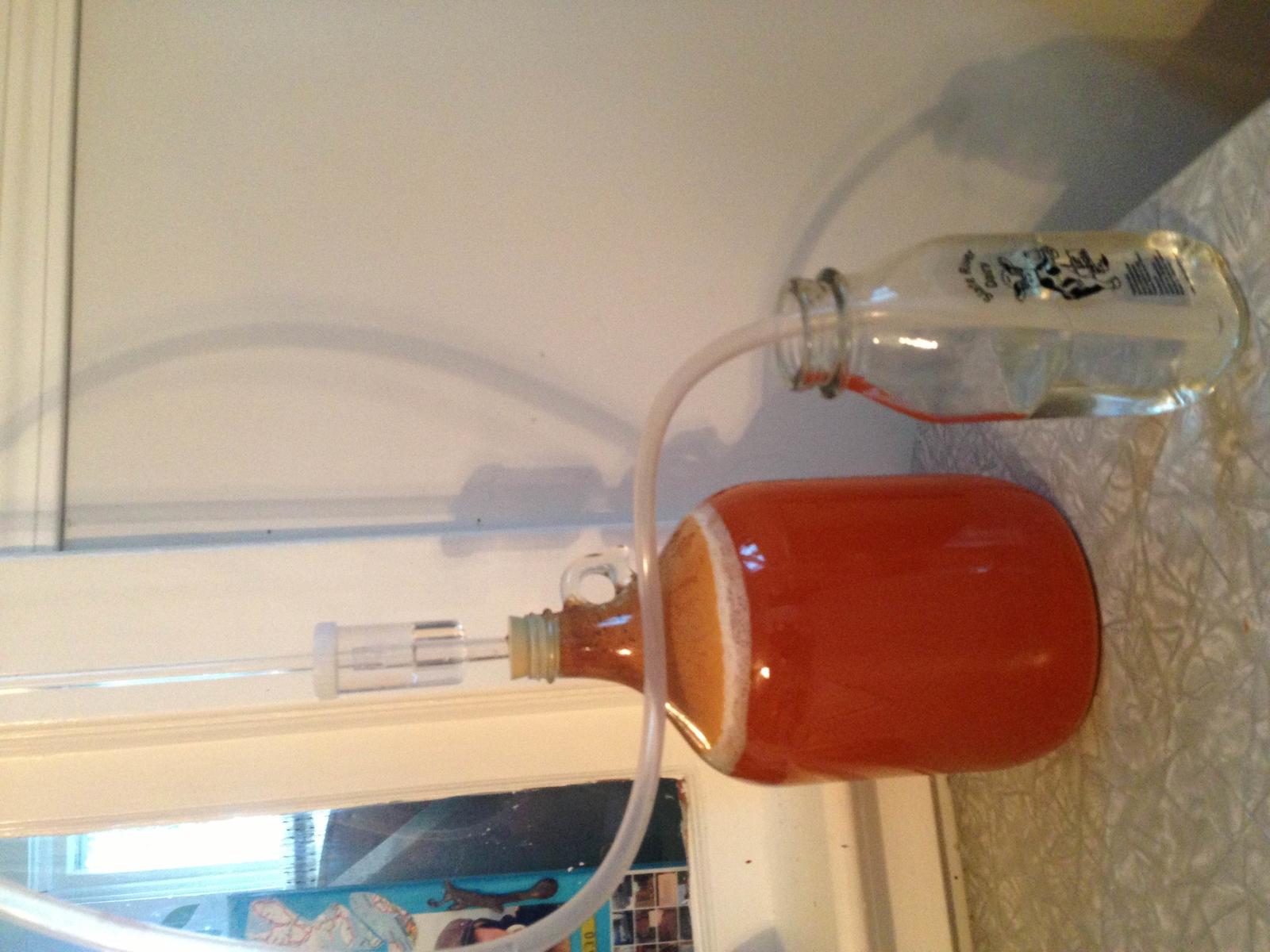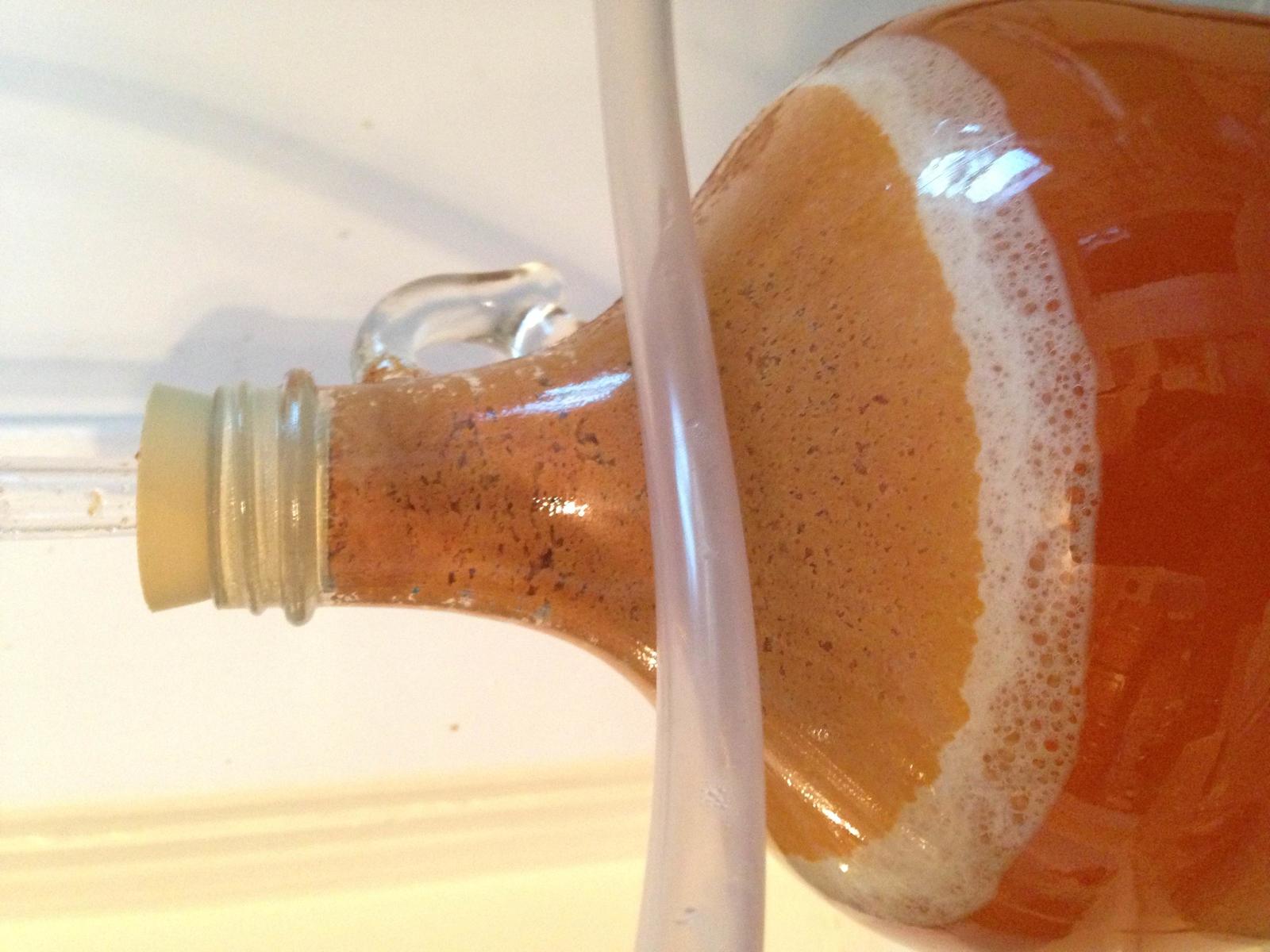ledahmck
Member
Hi everyone.
This is my first time making cider ever. I picked apples from a backyard tree and juiced them to make one gallon of cider.
I washed the apples but did not rinse the apples after cutting them to put into the juicer. Some of them were wormy and most were bruised. I think I forgot to sanitize one of the pots I used when straining.
I did not pasteurize the cider. I added one cup of honey to the cider and used Lavalin EC-1118 for my yeast. Fermentation has been going for about 4 days now, pretty active. I had to change my airlock to a blow off tube because it was getting so much crud in it. Then I changed the blow off tube once as well because it was getting pretty cruddy. It is still bubbling once per second but no crud is coming up anymore. To begin with there was foam at the top of the carboy that wasn't completely strained from the juicer. I guess this turned into krausen? Now there is a thin layer of white foam forming underneath the krausen/foam.
I am thinking of making another one gallon batch the exact same way, except this time pasteurizing it to compare flavours (that is if my first batch doesn't get infected).
So I have a few questions for you experts out there. I am sorry if there is repeat from other threads. I am just trying to pull all my internet research together. If you don't want to answer all please feel free to answer even one question! I understand that experience is probably the best teacher so I don't expect answers to everything, just throwing it out there. I'll be experimenting either way. Thank you in advance!
1. How likely is it that my cider will become infected because of poor sanitation/it is unpasteurized?
2. When will I be able to tell if it is infected? (is the white foam a good or bad sign?)
3. Where do you stand on the debate between pasteurized/unpasteurized? I likely will never make cider from store bought juice because my mentality is if I am going to make my own cider it might as well be from scratch. I probably won't ever be picking apples near farmyard animals. Is taste really affected by pasteurizing the cider? How risky is it to go the unpasteurized route? Do Cambden tablets affect flavour or add chemicals? It seems some purists think they are unnecessary.
4. I am interested in fermenting the entirely natural way without adding yeasts. Any suggestions/recipes/tips on this?
5. Do you have suggestions on the best yeasts to use for hard cider?
6. Can you share any recipes you recommend, esp. creative ones with spices/different flavours?
7. Do you recommend any books out there for making cider?


This is my first time making cider ever. I picked apples from a backyard tree and juiced them to make one gallon of cider.
I washed the apples but did not rinse the apples after cutting them to put into the juicer. Some of them were wormy and most were bruised. I think I forgot to sanitize one of the pots I used when straining.
I did not pasteurize the cider. I added one cup of honey to the cider and used Lavalin EC-1118 for my yeast. Fermentation has been going for about 4 days now, pretty active. I had to change my airlock to a blow off tube because it was getting so much crud in it. Then I changed the blow off tube once as well because it was getting pretty cruddy. It is still bubbling once per second but no crud is coming up anymore. To begin with there was foam at the top of the carboy that wasn't completely strained from the juicer. I guess this turned into krausen? Now there is a thin layer of white foam forming underneath the krausen/foam.
I am thinking of making another one gallon batch the exact same way, except this time pasteurizing it to compare flavours (that is if my first batch doesn't get infected).
So I have a few questions for you experts out there. I am sorry if there is repeat from other threads. I am just trying to pull all my internet research together. If you don't want to answer all please feel free to answer even one question! I understand that experience is probably the best teacher so I don't expect answers to everything, just throwing it out there. I'll be experimenting either way. Thank you in advance!
1. How likely is it that my cider will become infected because of poor sanitation/it is unpasteurized?
2. When will I be able to tell if it is infected? (is the white foam a good or bad sign?)
3. Where do you stand on the debate between pasteurized/unpasteurized? I likely will never make cider from store bought juice because my mentality is if I am going to make my own cider it might as well be from scratch. I probably won't ever be picking apples near farmyard animals. Is taste really affected by pasteurizing the cider? How risky is it to go the unpasteurized route? Do Cambden tablets affect flavour or add chemicals? It seems some purists think they are unnecessary.
4. I am interested in fermenting the entirely natural way without adding yeasts. Any suggestions/recipes/tips on this?
5. Do you have suggestions on the best yeasts to use for hard cider?
6. Can you share any recipes you recommend, esp. creative ones with spices/different flavours?
7. Do you recommend any books out there for making cider?


































![Craft A Brew - Safale BE-256 Yeast - Fermentis - Belgian Ale Dry Yeast - For Belgian & Strong Ales - Ingredients for Home Brewing - Beer Making Supplies - [3 Pack]](https://m.media-amazon.com/images/I/51bcKEwQmWL._SL500_.jpg)
























